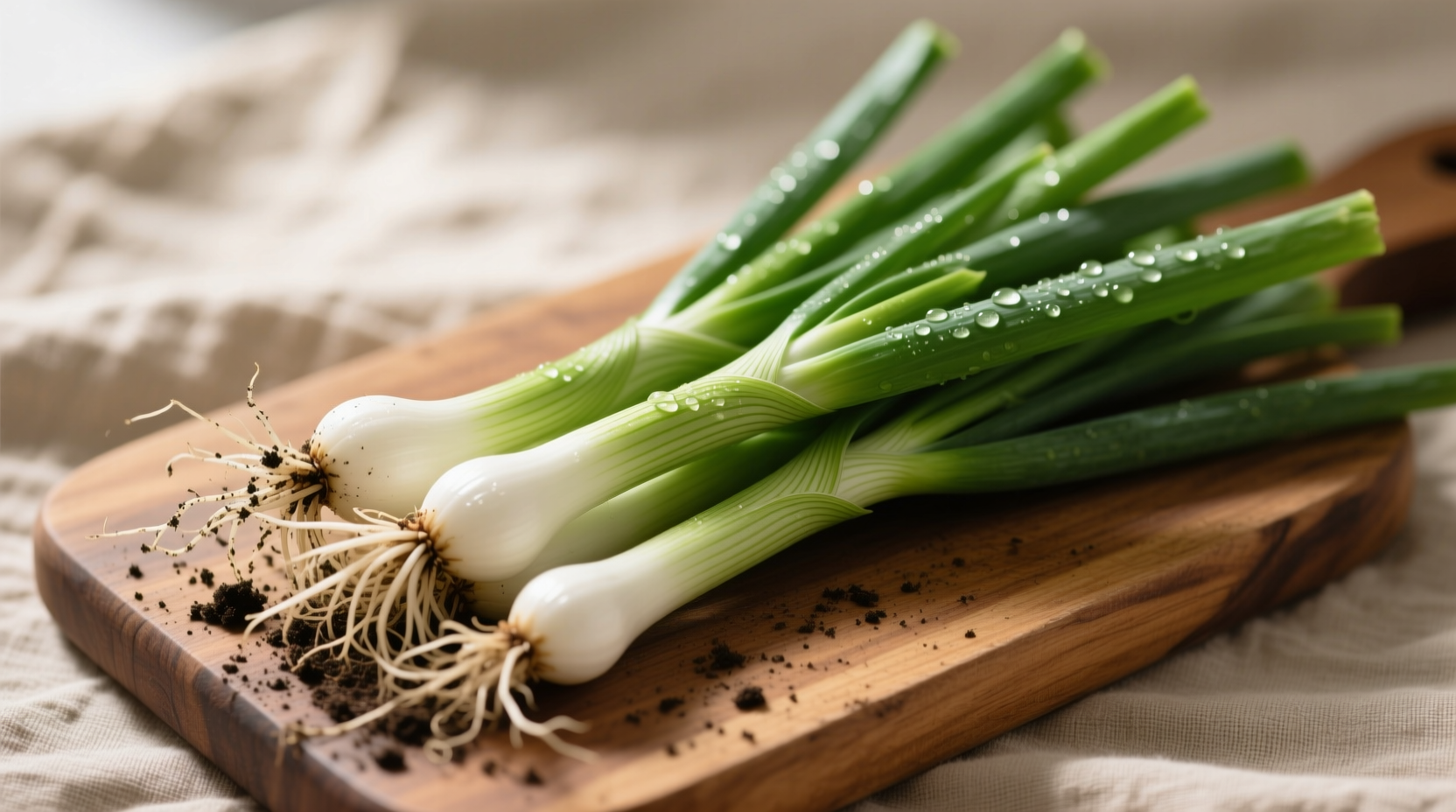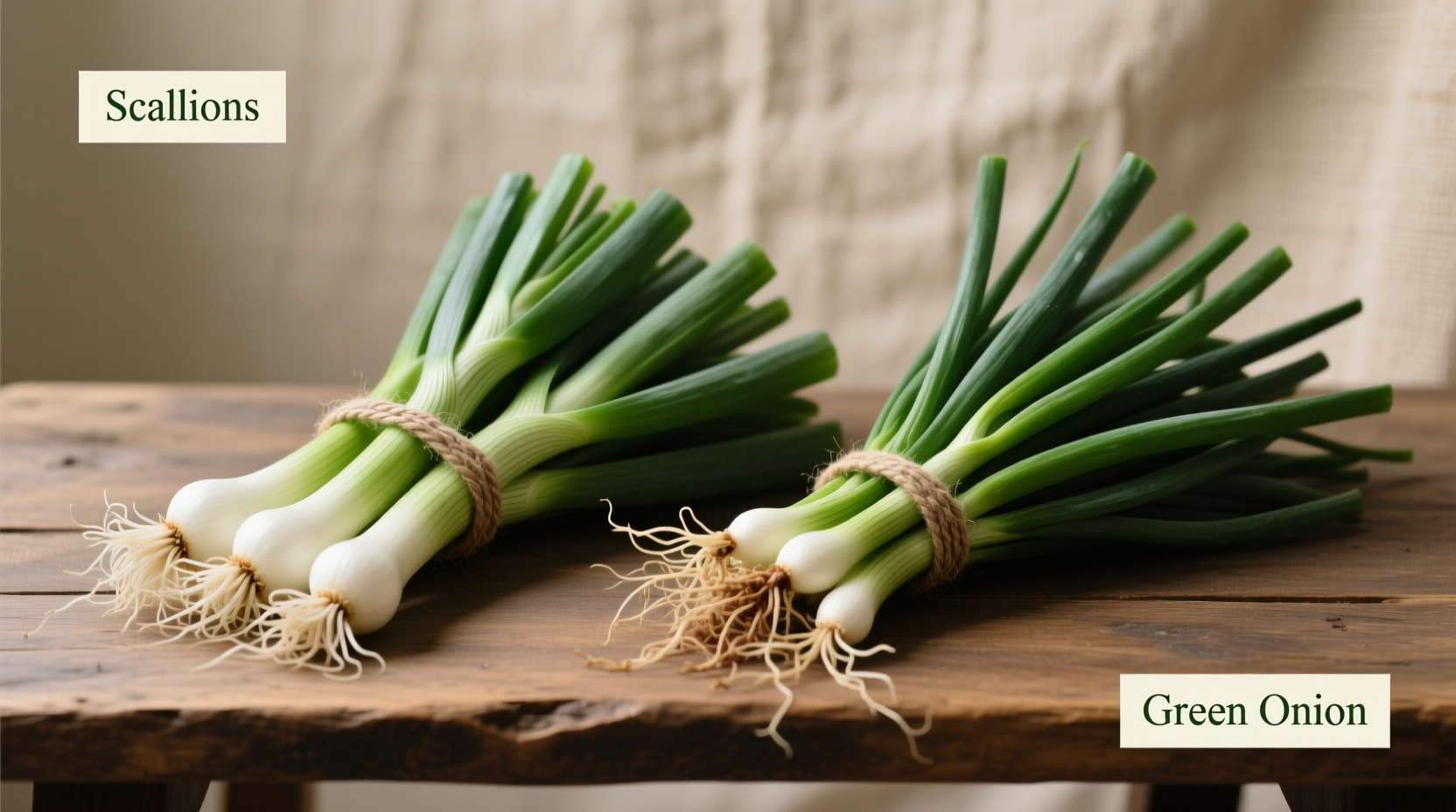Ever stood in the grocery store wondering whether to grab scallions or green onions? You're not alone. This common culinary confusion affects home cooks and professionals alike. Let's cut through the misinformation and give you the definitive guide to using these essential alliums correctly—plus practical storage tips, substitution advice, and regional terminology insights you won't find elsewhere.
Why the Confusion Exists: Terminology Breakdown
The terms scallion and green onion refer to the same immature onion plant (Allium fistulosum or sometimes Allium cepa var. aggregatum). The naming difference primarily reflects regional preferences rather than botanical distinctions:
| Region | Preferred Term | Additional Notes |
|---|---|---|
| United States (Northeast) | Scallions | Often implies slightly younger harvest |
| United States (West Coast) | Green onions | No meaningful distinction from scallions |
| Canada | Scallions | Official Canadian Food Inspection Agency uses this term |
| United Kingdom | Spring onions | May have slightly larger bulb than US varieties |
This terminology variation creates unnecessary confusion. The USDA's Agricultural Marketing Service confirms no regulatory distinction exists between these terms in produce grading standards.
Visual Identification Guide
Whether labeled scallions or green onions, look for these characteristics:
- White base (about 1-2 inches) that hasn't developed a significant bulb
- Vibrant green stalks that are firm and crisp
- No flowering (indicates over-maturity)
- Roots intact (sign of freshness)

When Terminology Matters: Context Boundaries
While generally interchangeable, understanding regional terminology prevents confusion in specific contexts:
- Recipe interpretation: British recipes calling for "spring onions" may expect a slightly larger bulb than American "scallions"
- Farmer's market communication: Vendors may use different terms based on growing practices
- International cooking classes: Instructors might specify terms based on their culinary training background
- Specialty varieties: Some growers market Allium fistulosum (Welsh onions) as "true scallions" with no bulb development
The University of Minnesota Extension confirms that both terms describe the same harvesting stage of onion plants, typically 60-80 days after planting when bulbs remain under 1/2 inch in diameter.
Culinary Applications: Maximizing Flavor
Understanding how to use these alliums properly makes a significant difference in your cooking:
White vs Green Parts: Flavor Profile Differences
- White portion: More pungent, onion-forward flavor - ideal for cooking
- Green portion: Milder, grassy flavor - best used raw as garnish
Perfect Pairings by Cuisine
- Asian dishes: Use whole in stir-fries (add white parts first, green parts at end)
- Mexican cuisine: Finely chopped raw in salsas and guacamole
- American classics: Essential in potato salad and deviled eggs
- Middle Eastern recipes: Key component in zhug and toum sauces
Storage Secrets for Maximum Freshness
Proper storage extends shelf life significantly:
- Trim roots but leave 1/2 inch intact
- Place upright in glass with 1 inch of water
- Cover loosely with plastic bag
- Store in refrigerator (change water every 2 days)
- Expect 2-3 weeks of freshness (vs 5-7 days unstored)
This method works because scallions continue to draw moisture through their roots. The National Center for Home Food Preservation confirms this technique maintains optimal crispness and flavor retention.
Common Misconceptions Debunked
Let's address frequent misunderstandings about scallions vs green onions:
- Myth: Green onions have developed bulbs while scallions don't
Fact: Both should have minimal bulb development. Larger bulbs indicate over-maturity regardless of name - Myth: They're different species
Fact: Both terms typically refer to Allium fistulosum or immature Allium cepa - Myth: Cooking requires one over the other
Fact: Interchangeable in all recipes - flavor depends on freshness, not name
When You Can't Find Them: Smart Substitutions
Out of scallions or green onions? Try these alternatives based on your recipe needs:
- For raw applications: Chives (milder) or finely sliced red onion (stronger)
- For cooking: Shallots (sweeter) or yellow onion whites (more pungent)
- For garnish: Leek greens or celery leaves (similar visual appeal)
Remember that substitution success depends on whether you need the white or green portion's specific flavor profile. Professional chefs like Antonio Rodriguez emphasize that "the key isn't finding a perfect replacement but understanding which flavor element you're trying to replicate".
Practical Takeaways for Everyday Cooking
Now that you understand scallions vs green onions are the same ingredient, implement these actionable tips:
- Don't stress over which term appears in recipes—they're interchangeable
- Use white parts early in cooking for flavor base, green parts at end for freshness
- Store properly to triple their refrigerator lifespan
- When in doubt, ask the produce manager about harvest date rather than name
- Grow your own in containers for continuous harvest of true scallions











 浙公网安备
33010002000092号
浙公网安备
33010002000092号 浙B2-20120091-4
浙B2-20120091-4